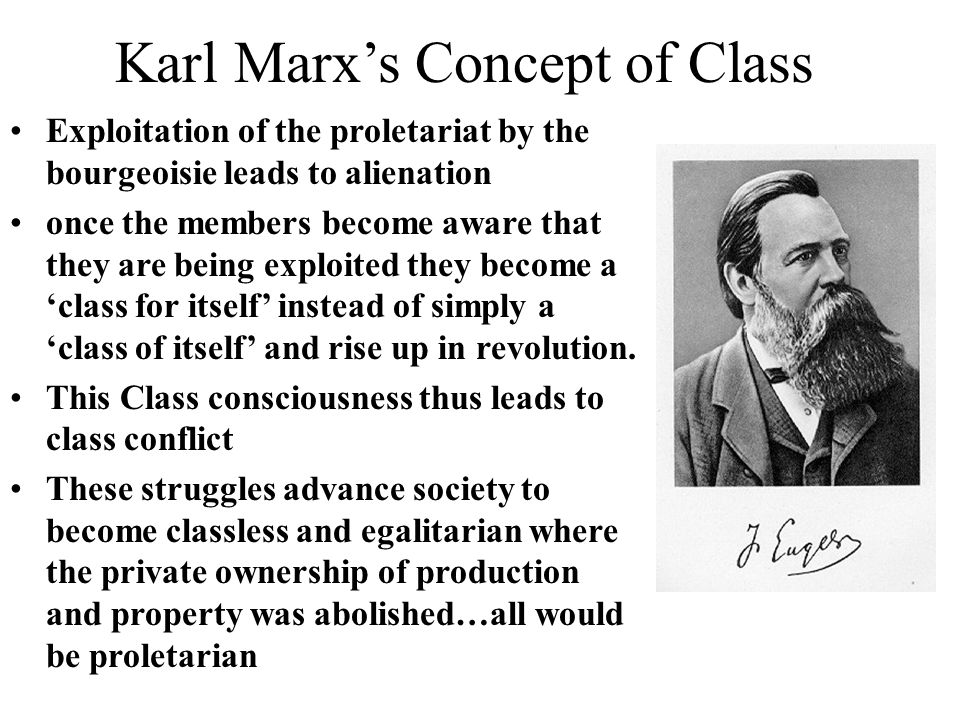
Relevance: Sociology: Paper I: thinkers
Model Answer format-

Karl Marx distinguished between a ‘class in itself’ and a ‘class for itself’. A class in itself is simply a ‘social group whose members share the same relationship to the means of production’ .Karl Marx argued that a social group only fully becomes a class when it becomes a ‘class for itself’. At this stage, its members have ‘class consciousness’ and ‘class solidarity.’ Class consciousness means that ‘false class consciousness’ has been replaced by a full awareness of the true situation, by a realization of the nature of exploitation. Members of a class then develop a ‘common identity, recognize their shared interests and unite’, so creating class solidarity. The final stage of class consciousness and class solidarity is reached when members realize that only by ‘collective struggle’ can they overthrow the ruling class, and take positive steps to do so.
a) Capitalist society is by its very nature unstable. The ‘conflict of interest’ between the bourgeoisie and the proletariat cannot be resolve within the framework of a capitalist economy. The basic conflict of interest involves the exploitation of workers by the bourgeoisie or capitalists.
b) This first contradiction would be highlighted by a second which is the contradiction between social production and individual ownership. As capitalism developed, the workforce was increasingly concentrated in ‘large factories’ where production was a ‘social enterprise’. Social production also makes it easier for workers to organize themselves against the capitalists. If facilitates communication and encourage a recognition of common circumstances and interests.
Karl Marx further outlined the factors which would hasten the transition and eventually leat to the ‘polarization’ of the two main classes in the capitalist society.
a) The increasing use of machinery will result in a homogeneous working class. Since ‘machinery obliterates the differences in labour’, members of the proletariat will become increasingly ‘’
b) The difference in wealth between the bourgeoisie and the proletariat will increase as the accumulation of capital proceeds. Therefore though the real wages and living standards of the proletariat may rise, its members will become poorer in relation to the bourgeoisie. This process is known as
c) The competitive nature of capitalism would mean that that only the largest and most wealthy companies will survive and prosper. Thus the petty bourgeoisie, the owners of small businesses, will sink into the proletariat. This process of proletarianization would lead to capital being concentrated in few hands. These three processes, will result in the polarization of the two major classes.
As a result of the transition from being a ‘class-in-itself’ to a ‘class-for-itself’ and the consequent polarization of the two classes, Karl Marx argued that a ‘proletarian revolution’ would soon follow and the ‘communist utopia’ of his dreams would be a reality. However Marx’s conception of class-in-itself and class-for-itself has been questioned on the basis of ‘empirical studies.’
According to V. Lenin, workers left to themselves would create only a ‘trade union consciousness,’ seeking limited social and economic reforms, and not a true revolutionary awareness.
- Westergaard, in his study of Britain society argues that though class inequalities are on the rise, yet there appears to be ‘less class consciousness’. Political parties responsible for articulating and mobilizing class interests are riven with internal disputes.
Post-Modernists, Pakulski and Waters in their book, ‘The Death of Class’ claim that not that social inequality is disappearing, but class based division is loosing it’s significance and more cleavages are appearing in society.
Therefore Karl Marx’s conception of the two categories of ‘class-in-itself’ and ‘class-for-itself’ though is an important contribution in ‘theoretical formulation’, in terms of understanding the class-system and class-relations, but is not equally supported by empirical reality.


It’s important to note that Marx uses Kant’s structure thing-in-itself, whereas this thing is a working class.